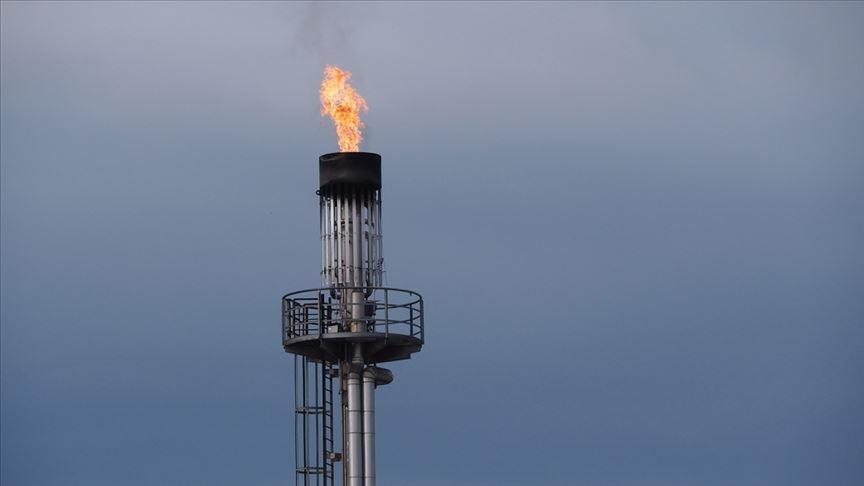ISTANBUL
Commodity markets extended their upward trend into a second week, as expectations of the end of hawkish policies remained strong around the world.
After weeks of uncertainty, selling pressure gave way to an uptrend in the previous week, with markets posting significant gains last week as well.
Pricing taking into account that the Fed may start cutting interest rates next May, with the possibility of a “soft landing” continuing to strengthen, are having a positive impact on commodity markets.
While it is certain that in the money markets the US Fed will leave interest rates unchanged at the first meeting of next year, the probability of the bank starting interest rate cuts in March rose to 85%.
The US economy grew 4.9% in the third quarter of this year, below expectations, according to data released last week.
The number of initial jobless claims in the country also rose to 205,000 in the week ending Dec. 16, which also failed to meet market expectations.
The Core Personal Consumption Expenditure (PCE) Price Index, which excludes food and energy items that the Fed considers inflation indicators, climbed 0.1% on a monthly basis and 3.2% on an annual basis in the same period, the lowest since April 2021.
Market expectations were for the PCE Index to soar by 0.2% month-on-month and 3.3% year-on-year.
It surged 0.1% on a monthly basis and 3.4% on an annual basis.
The slowdown in the PCE Index, the Fed’s inflation indicator, signaled that the downward trend in inflation continued, analysts noted.
– Precious metals see upward trend except for palladium
Concerns that world economies may remain in the grip of inflation and recession are slowly moving out of pricing, and the decline in bond yields to the lowest level in the last five months reduced the alternative cost of gold, analysts said.
While the upward trend in precious metals excluding palladium stood out last week, gold gained 1.7%, silver 2.6%, and platinum 2.9%, while palladium lost 0.3%.
The 5.4% month-on-month jump in durable goods orders in the US in November, which exceeded market expectations, was also among the important factors in a rise in silver prices.
Base metals also saw an upward trend last week.
Lower transaction fees negotiated between Chinese smelters and miners for next year’s deliveries raised supply concerns over copper.
Chinese smelters hoped for a change in the fees for converting concentrates into refined metal, which is $88 per metric ton and 8.8 cents per pound (0.45 kg), but they had to agree to a change to $80 and 8.0 cents respectively for 2024.
While restocking efforts in China and growing physical demand also pushed up copper prices, the shift towards renewable energy, which is expected to increase globally, may also have a positive impact on copper demand, analysts said.
In light of these developments, copper prices rose 1.4%, lead 2.5%, aluminum 3%, nickel 1.6%, and zinc 2.3%.
Oil prices continue to rise amid Israeli attacks on the Gaza Strip, raising tensions in the Middle East, which holds most of the global oil reserves, and actions targeting ships in the Red Sea.
Yemen’s Houthi rebel leader last month made threats that they could target Israeli ships in the Red Sea.
Gideon Golber, director general of the Port of Eilat in southern Israel, said that the port’s activity plummeted 85% since the Houthis began attacks in the Red Sea on ships linked to or cooperating with Israel.
Following Houthi attacks, many shipping companies decided to suspend operations in the Red Sea. During the week, British energy company BP announced that it would halt all tanker traffic in the Red Sea, raising concerns that the problem, which has so far mostly affected goods transportation , could expand to energy shipments.
Supply disruptions and potential risks from conflicts in the Middle East could lead to serious fluctuations in oil markets, experts say.
Gas prices also went up as US weekly natural gas inventories declined more than expected.
Given these circumstances, Brent crude oil and natural gas on the New York Mercantile Exchange closed out the week with rises of 3.7% and 3.5% respectively.
– Cocoa regains peak position
Agricultural commodities followed a mixed course last week.
Wheat prices on the Chicago Mercantile Exchange fell 2.6%, corn 2.2%, and soybeans 2.1%, while the price of rice rose 1%.
Coffee prices are also supported by concerns that the ongoing dry weather in Brazil will have a negative impact on coffee crops.
Cocoa prices were also recently strengthened due to concerns over cocoa supply.
Cocoa shipped to ports by farmers from the Ivory Coast is estimated to have fallen 33% to 671,544 metric tons between Oct. 1 and Dec. 17 year-on-year.
Cocoa regained its peak position last week at $4,334 per metric ton.
With these developments, the price of cotton on the Intercontinental Exchange rose 0.1%, coffee 2.1%, and cocoa 1.1%, while sugar prices dropped 7.5%.

